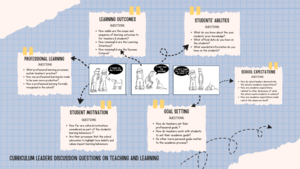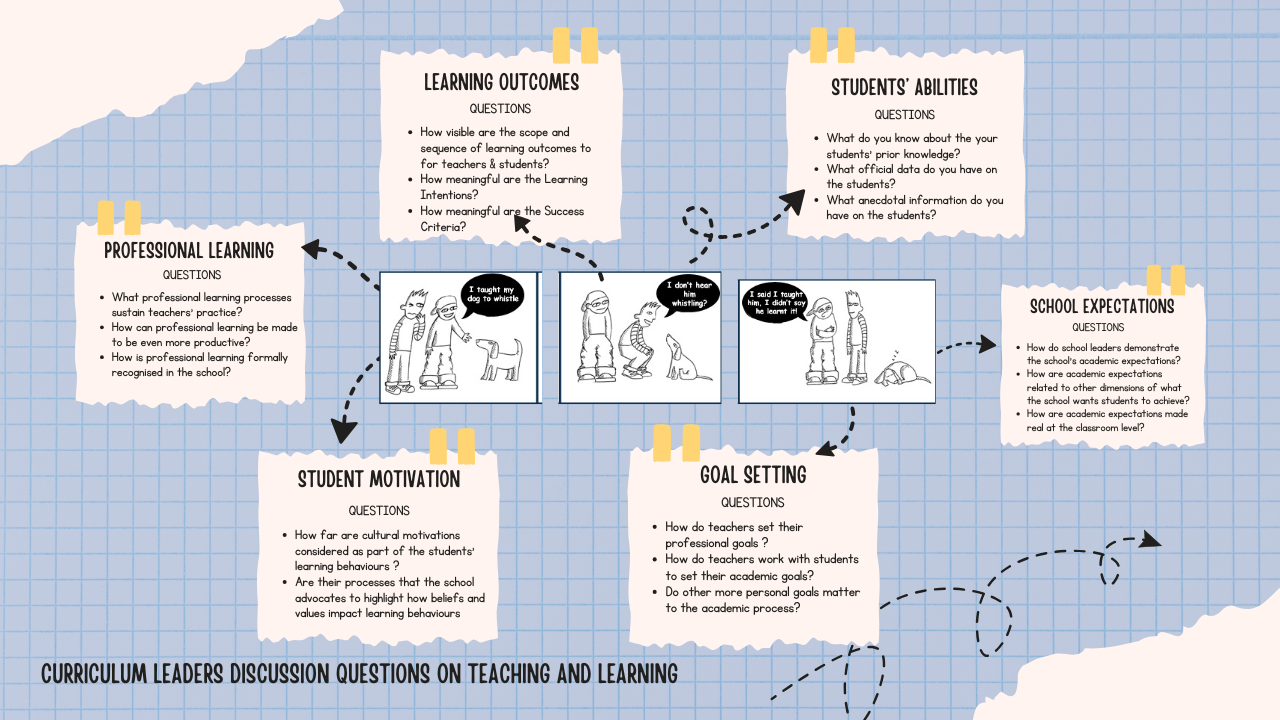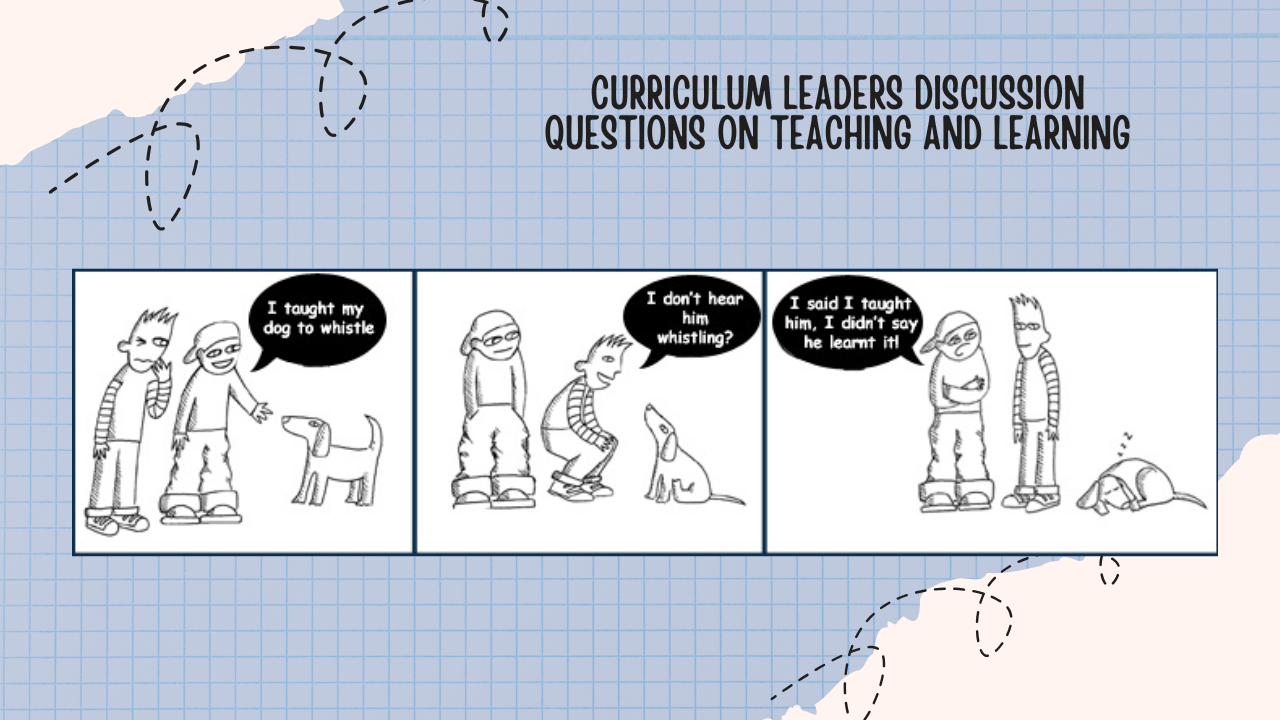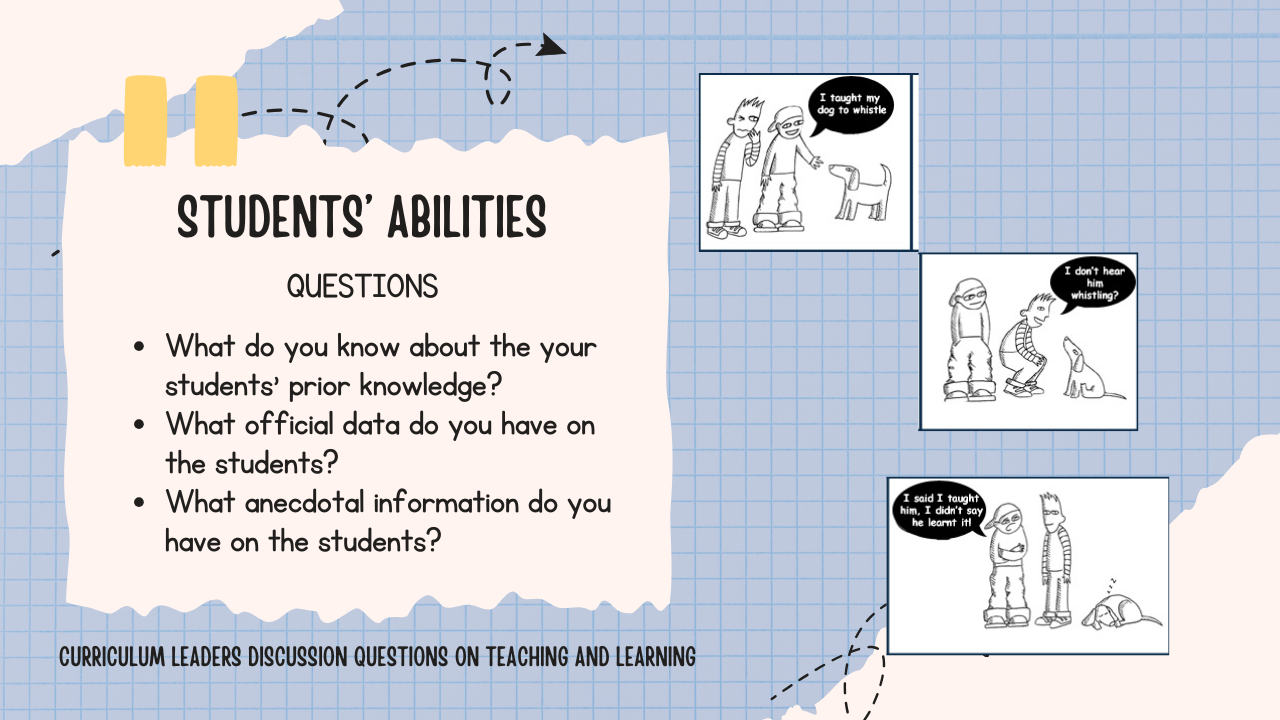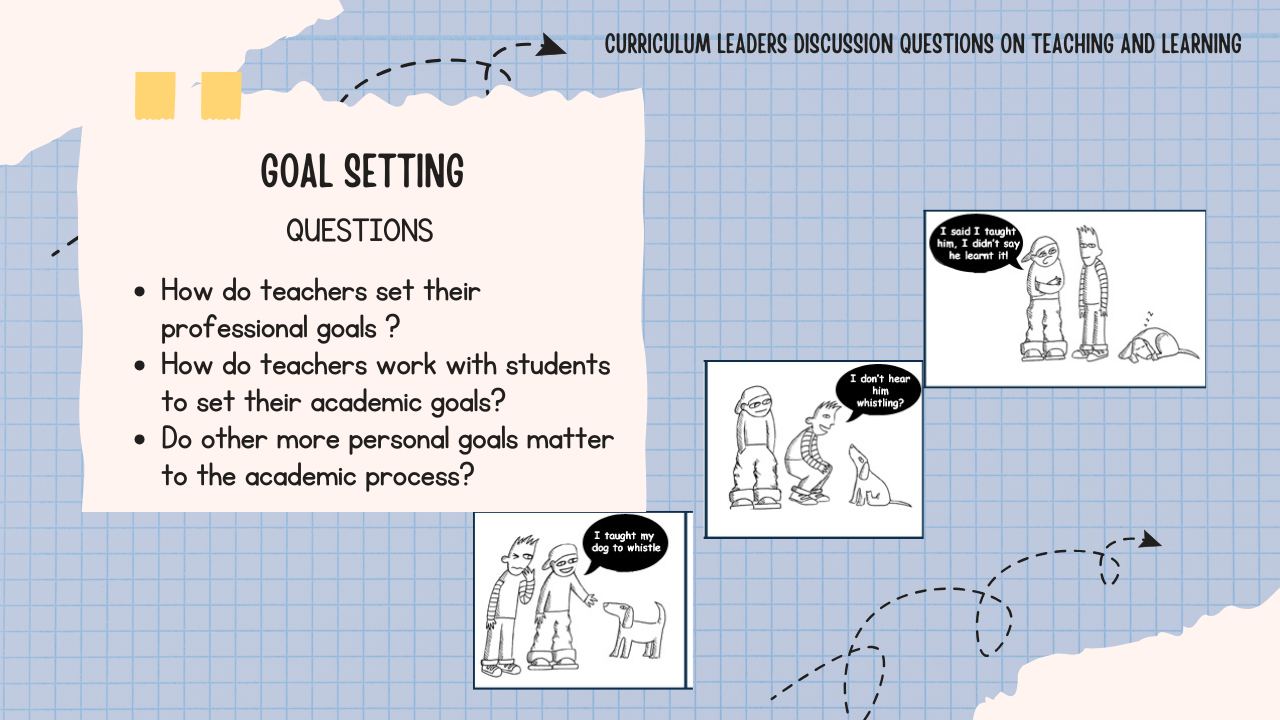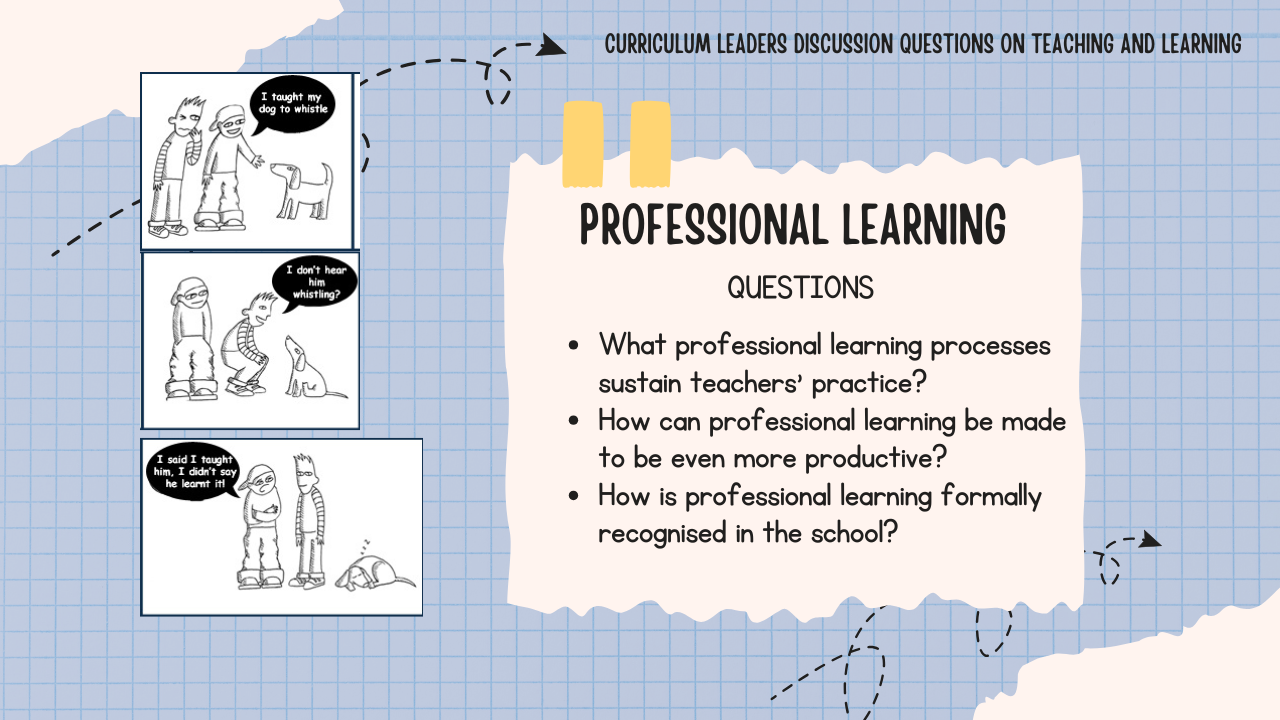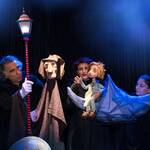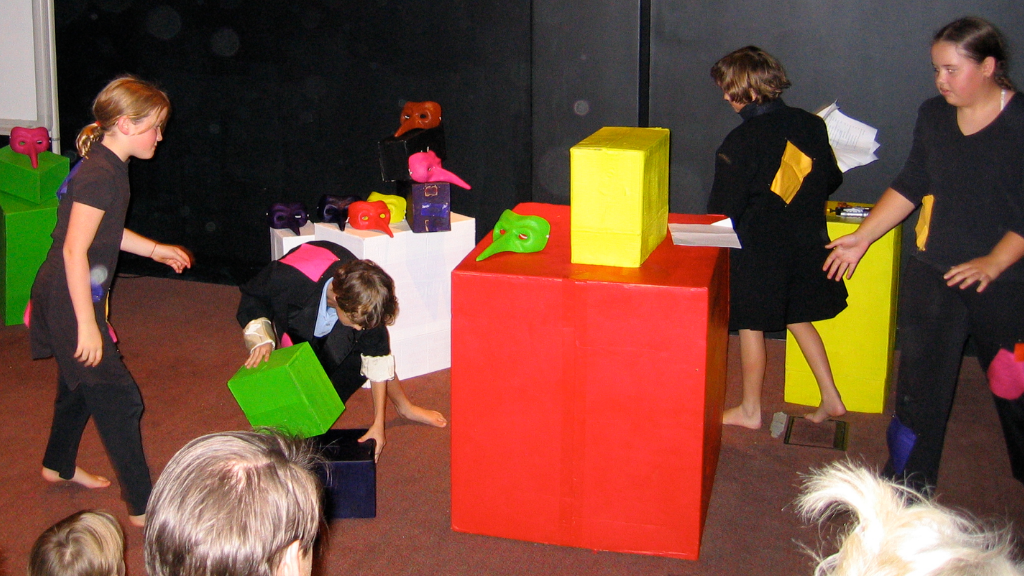Introduction
The following series of images is designed to provoke deep reflection among curriculum leaders on the critical distinction between teaching and learning. At the heart of this discussion is a simple but profound cartoon that captures a common educational paradox: “I said I taught him, I didn’t say he learned it.” This witty exchange serves as a central metaphor, challenging us to look beyond the delivery of instruction and focus on the evidence of genuine student understanding. Using this core idea as a lens, each image explores a fundamental aspect of educational practice, from the clarity of learning outcomes and the understanding of students’ abilities to the impact of school expectations and professional development. These questions are intended to guide a comprehensive dialogue, encouraging leaders to consider how every part of the school system can work in concert to bridge the gap between what is taught and what is truly learned.
Curriculum Leader Questions
Here is the central idea that will anchor our entire discussion. This simple cartoon brilliantly captures the essential challenge for all educators: the distinction between the act of teaching and the outcome of learning. It serves as a constant reminder to question whether our efforts in the classroom are truly translating into new knowledge and skills for our students.
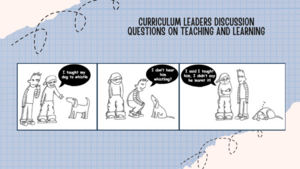
With our central paradox in mind, we first turn to learning outcomes. How can we be sure that our learning intentions and success criteria are meaningful tools for student learning, rather than just a checklist for teacher delivery? This section prompts us to examine the visibility and effectiveness of the very foundation of our lesson planning.
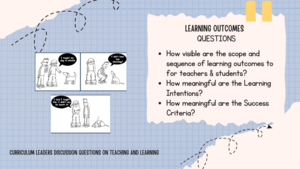
To bridge the gap between teaching and learning, we must first have a deep understanding of the learner. This section prompts a crucial inquiry into what we know about our students—from their prior knowledge to the formal and anecdotal data we hold. Acknowledging their starting points is fundamental to ensuring they reach their destination.
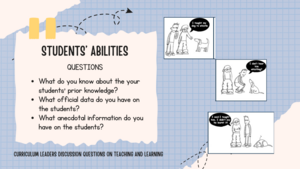
If genuine learning is the target, we must consider how it is reflected in the goals we set. Are the academic and professional goals within our school focused on the evidence of learning, or merely the completion of instructional tasks? Here, we explore how teachers and students can work together to set goals that are both ambitious and meaningful.
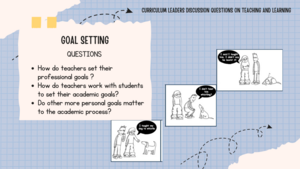
The dog in our cartoon may have been taught, but was it motivated to learn? Motivation is the engine of learning, and this section encourages a discussion on the cultural and personal values that influence a student’s desire to engage. How does the school actively foster an environment where students want to learn?
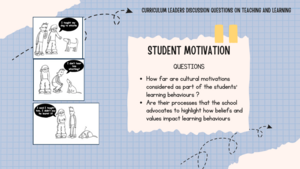
The gap between teaching and learning is often influenced by the wider school culture. This section asks us to reflect on how school leaders demonstrate and embed high academic expectations. How do we ensure these expectations are focused on deep student learning and are made real in the day-to-day practice of every classroom?
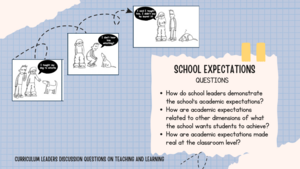
A teacher’s ability to ensure students learn is directly supported by their own development. Here, we question the processes that sustain and enhance teacher practice. Is our professional learning model productive, formally recognized, and ultimately equipping our staff with the tools to close the teaching-learning gap?
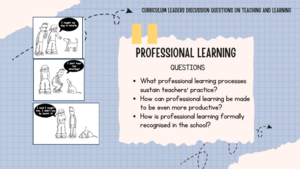
This final image brings all the previous elements into a single, interconnected framework. It visually represents how the central challenge—ensuring what is taught is also learned—is not an isolated issue but one that is woven through every critical component of our educational ecosystem, from student motivation to the professional learning of our teachers.
